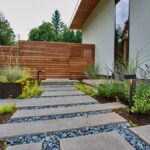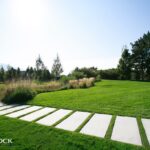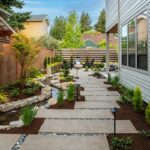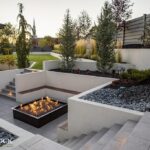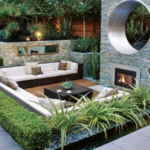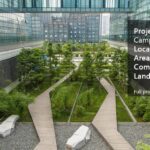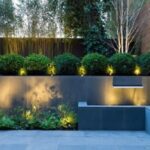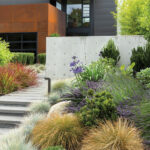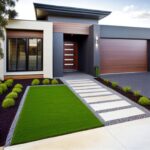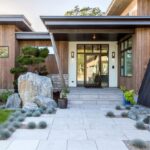Modern landscape design has become an increasingly popular trend in recent years, with homeowners and designers alike embracing a more contemporary approach to outdoor spaces. This style of landscaping typically incorporates clean lines, minimalistic design elements, and a focus on functionality and sustainability.
One key aspect of modern landscape design is the use of geometric shapes and patterns. This can be seen in the layout of walkways, patios, and plant beds, all of which are often designed with crisp, straight lines and sharp angles. This geometric aesthetic helps to create a sense of order and organization in the outdoor space, while also adding a touch of modern sophistication.
In addition to geometric shapes, modern landscape design also often incorporates a minimalist color palette. Neutral colors such as whites, grays, and blacks are commonly used to create a sleek and contemporary look. This simplicity in color helps to highlight the architectural elements of the landscape, as well as allowing the natural beauty of plants and materials to shine through.
Another hallmark of modern landscape design is the use of sustainable and eco-friendly materials. Designers and homeowners are increasingly turning to materials such as recycled wood, reclaimed stone, and native plants to create environmentally friendly outdoor spaces. This commitment to sustainability not only helps to reduce the environmental impact of landscaping projects, but also adds a unique and natural touch to the design.
In terms of plant selection, modern landscape design often favors plants that are low-maintenance and drought-tolerant. This not only helps to conserve water and reduce maintenance costs, but also creates a more sustainable and environmentally friendly landscape. Grasses, succulents, and native plants are popular choices for modern landscapes, as they require minimal care and are well-suited to the local climate.
Overall, modern landscape design offers a fresh and contemporary approach to outdoor spaces, combining sleek design elements with sustainable practices to create a beautiful and functional landscape. By incorporating geometric shapes, minimalist colors, and eco-friendly materials, designers and homeowners can create outdoor spaces that are not only aesthetically pleasing, but also sustainable and environmentally conscious.

